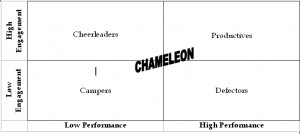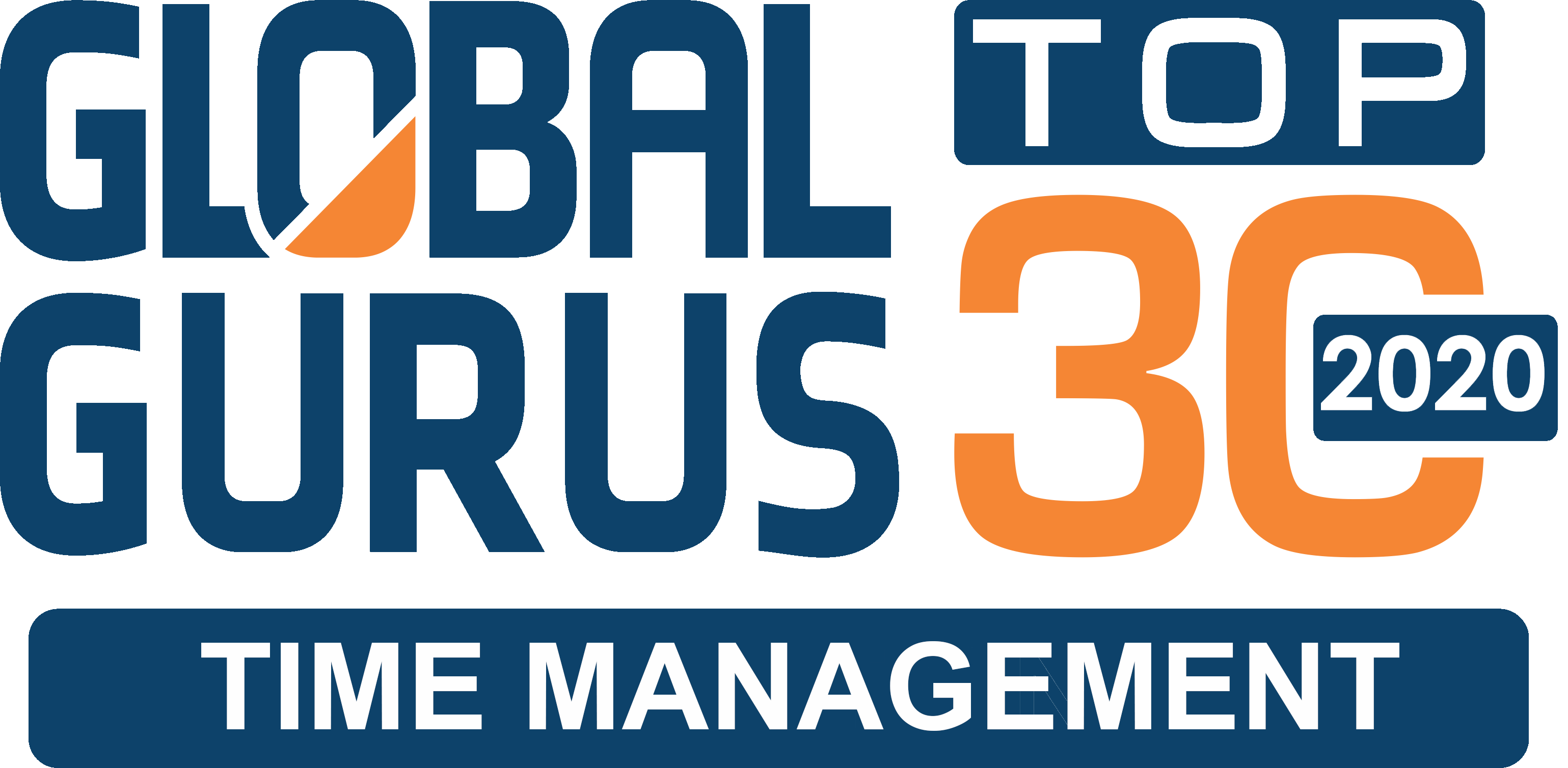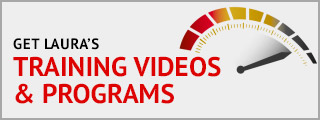“Quantifying the gap between exemplary and average employees demonstrates the tremendous potential for organizations to increase the performance of their workforces.” —Tom Gilbert, author of Human Competence: Engineering Worthy Performance
In the last four blog entries, I’ve explained my new Productivity Management Matrix in considerable detail. This metric compares levels of employee engagement and performance against one another, organizing workers into four broad categories: Campers, Cheerleaders, Defectors, and Productives.
But as within any categorization system, not everyone fits neatly. For example, what if someone is just plain average on both fronts? What if both their performance and engagement levels, taken together, fall right smack in the middle of all four quadrants—on the crossbar where they come together?
Thus was born the concept of the Chameleon: the supremely average worker, a person who is so malleable and flexible that they can easily morph into any of the other categories. Such people do exist; we’ve all known them. So let’s look at what you should do when you find one on your team.
How to Spot a Chameleon
Identifying a Chameleon is no easy task, since by definition they’re good at hiding. Your best way of ferreting out a Chameleon is to watch them long-term. Admittedly, this is difficult, since you can’t afford to focus your attention on just a few individuals; but do what you can.
Ideally, a Chameleon will become visible when they shift, however temporarily, into one of the primary quadrants. You might notice, for example, that someone you had tentatively assessed as a Camper suddenly becomes more productive through no input of yours, sliding over into the Defector camp. Six weeks later, they may display both high productivity and high engagement—and you may think you’ve got a newly-fledged Productive on your hands.
But don’t let them fool you. You’re more likely to be looking at a Chameleon, who for reasons of their own is bouncing around their natural state of being right there in the middle. Can’t have that!
How a Chameleon Can Impact Your Team
If a Chameleon can manage to stay right in the average middle-of-the-road, they might be of average impact: indifferent, but not necessarily bad. They’ll never shine as a SuperCompetent, but they won’t drag you down, either.
But most Chameleons don’t stay precisely in one place. This makes them confusing, since you never know where they’re going to be on a particular day, week, or month. Their impact depends on their mood: if they’re a kind-of Productive right now, they’re an excellent influence on other team members…but they can suck all the life out of a team if they slip down into low-engagement territory.
Even if such a Chameleon’s behavior averages out over time, you’re not going to end up with a positive. You see, if no one can ever be sure how that Chameleon is going to behave, then the resultant confusion will just cause stress—which will certainly result in negative effects.
How to Handle a Chameleon
Since a Chameleon is already in the middle, it ought to be fairly straightforward to move them toward Productivity. Now, if they’re a moving target, as many Chameleons are, you have to stabilize them first—because all this bouncing around is detrimental to the team. In my opinion, it doesn’t matter where you stabilize them, because at least they’ll be stuck in one place long enough to work with.
How to Coach the Chameleon
I think you have to take low engagement as the Chameleon’s baseline and work from there, even if some do show the occasional flash of high engagement. That is, treat them as you would a Camper or Defector, with a few modifications. Approach them and lay it all out there. Tell them that you can’t get a handle on them—that you know they’re capable of good work, because you’ve seen it, but their inability to rise above the dull average is hurting everyone. If their behavior is erratic, bring that to the fore, too.
Ask them what they think they need in order to settle down and move toward high-engagement, and be willing to give it to them (within reason). Possibly they’ve been having health or family problems that you can help fix, with counseling if nothing else; maybe they just need to know that you care, and that they have opportunities for advancement if they’re willing to apply themselves. Show them how you’re going to work toward moving them forward, complete with milestones to track their progress. Once they’ve settled down, you can determine which quadrant they fit into, and then use the methods I’ve discussed in the previous entries in this series to steer them where you want them to go.
In Conclusion…While I do believe that nearly all employees fit comfortably within the Productivity Management Matrix, a small but noticeable percentage will cluster around the middle: that is, they’ll be so-so in both engagement and performance. The boring ones sitting in one place are easy to work with, whereas the erratic ones are more of a challenge. You can’t easily assess someone who keeps bouncing around, so you’ve got to do what you can to stabilize them. Only then can you pick them up and take them where you want them to go, using the methods I’ve outlined in this and my previous Productivity Management Matrix blogs.



